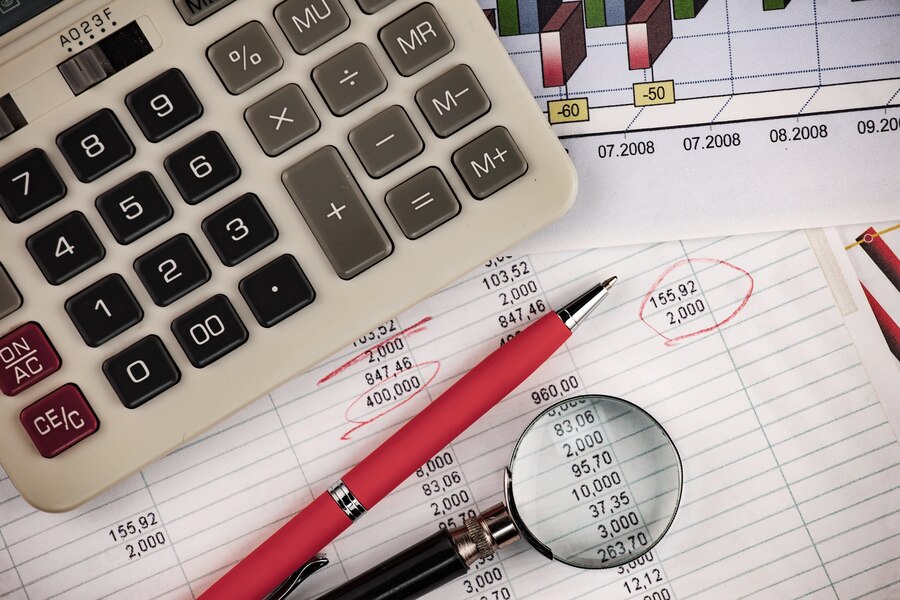1. List and explain Five common bases for apportioning expenses among departments
Suggested answer:
The following is the common bases for apportioning expenses among departments
(i) Sales; All expenses that are related to sales are apportioned on this basis. Expenses such as discount allowed, bad debts, carriage outwards, advertising, selling are distribution expenses are all apportioned using this basis.
(ii). Purchases: Expenses that are related to purchase are apportioned on this basis:
Discount received, carriage inwards, etc. are some of the expenses that are apportioned based on purchase.
(iii). Floor area occupied: Under this base of apportionment, expenses that are affected by the space occupied by each department are apportioned based on floor are occupied. Expenses such as rent and rates, insurance of building, depreciation of building, repairs and maintenance to building, and so on may use floor area occupied as the base of apportionment.
( iv) Number of employees: All expenses that is related to labour or human beings are apportioned using this bases of apportionment. They include among others, canteen expenses, supervising, wages and salaries.
(v) Value of fixed Assets/Item: All expenses that is related to a particular fixed asset or item are apportioned based on this basis of apportionment. They include insurance on the fixed asset, depreciation and repair on the fixed assets, etc.
WASSCE – NOV. 2013
2. (a) Explain
(i) Provision
( ii) Bad debts
(b) List six types of provision found in books of accounts
(c) State the accounting procedure for recording bad debts recovered
Suggested answer:
(a) (i) Provision: it is an amount charged against profit to provide for any known cost such as depreciation of fixed assets, possible losses by bad debts, and so on, the exact amount of which cannot be determine.
(ii) Bad debts: these are amount owed but which cannot and will not be settled. They are debts which cannot be recovered (paid) by the firm’s debtors.
(b) The following are some of the provisions found in the books of account:
(i) Provision for rent payable
(ii) Provision for discount allowed
(iii) Provision for depreciation and renewal of fixed assets
(iv) Provision for unrealized profit
(v) Provision for amortization
(vi) Provision for tax payment by the company
(vii) Provision for pension fund
(c) Account procedure for recording bad debts recovered:
(i) Reinstate the debts by:
Debit; Debtors account
Credit; Bad debt recovered account, with the amount of debts recovered
(ii) Where cash or Cheque is received from the debtors in payment of the debts:
Debit cashbook
Credit Debtors account , with the amount received
(iii) At the end of the financial year:
Debit, Bad debts recovered account
Credit, Bad debts or profit and loss account, with the bad debt recovered.
3. (a) What is a journal?
(b) List five columns of the journal
(c) State two advantages of the journal
(d) List five uses of the journal
Suggested answer:
(a) A journal is a subsidiary book which is used to record transactions in a chronological order.
(b) the following are the columns of the journal
(i) Date or number column
(ii) Particulars or Details column
(iii) Folio column
(iv) Debit column
(v) Credit colum
(c) The advantages of a journal are as follows:
(i) Error can be easily located and prevent through the use of journal.
(ii) Required explanations about the transactions can be obtained from the journal.
(iii) A data record can be easily maintained since the transactions are chronologically entered in the journal
(d) The uses of the journal are given below:
(i) Opening entries in the books of a firm.
(ii) Sales and purchases of fixed assets on credit.
(iii) Correction of errors.
(iv) Written off bad debts.
(v) Closing entries in the books of a firm.
(vi) Purchases of businesses
(vii) Sales of businesses.
4. Explain the following accounting concept and conventions:
(a) consistency (b) historical cost
(b) going concern (c) periodicity
(e) accruals
Suggested answer:
(a) Consistency; This concept assumes that the accountant maintains a specific method of recording accounting transactions over a period of time. He can change that method only when he thinks that better information can be presented.
(b) Historical cost; It states that assets and expenses are recorded in the books at cost the price at which they are acquired or paid. The value of the item forms the bases for its further treatment.
(c) Going concern: This concept assumes that the enterprise will continue in operational existence for the foreseeable future. Thus in preparing the account, the accountant assumes that the business will continue to operate for an indefinite period of time.
(d) Periodicity; This concept assumes that accounting or financial statements are prepared at a given period of time and at interval, usually one year. This is to help the user know the performance of the business from time to time.
(e) Accruals; This concept states that in ascertaining the profit of the business, all expenses incurred (whether paid or not) are matched against revenue(whether received or not)for the same period. Thus, the expenses incurred to generate particular revenue should matched with those reverences that they help to generate


